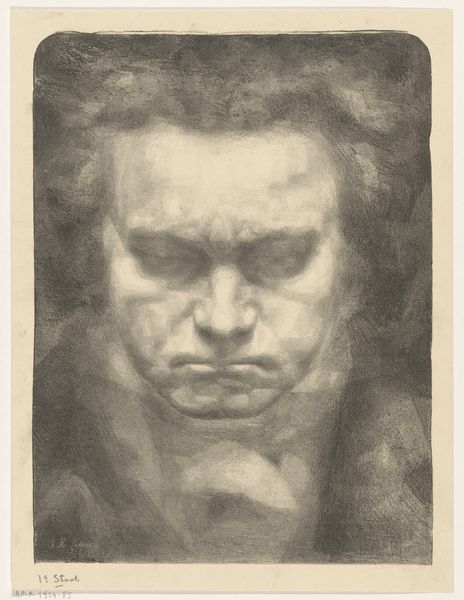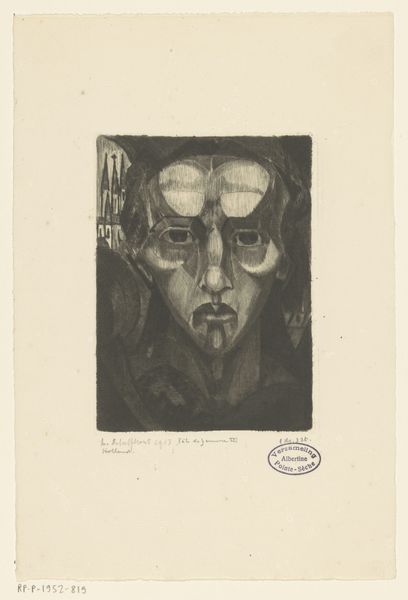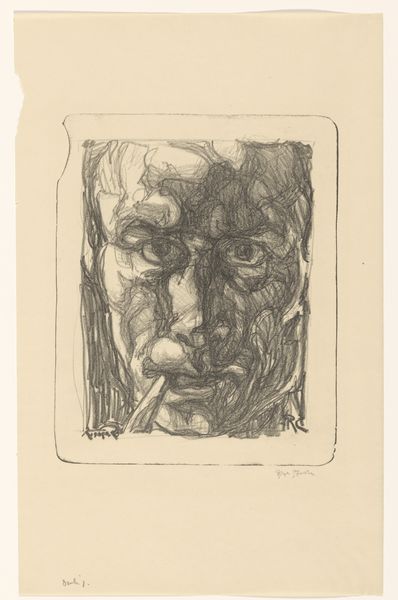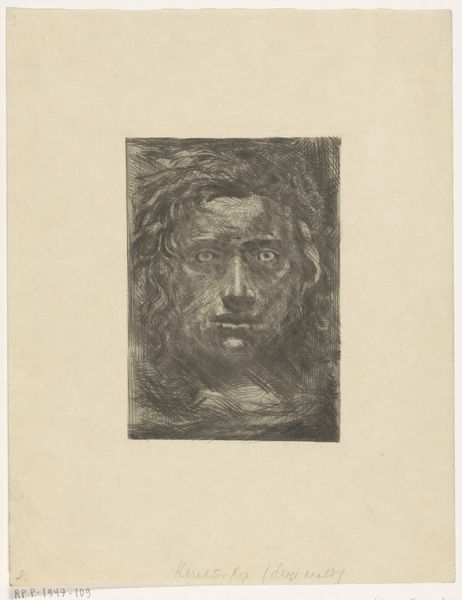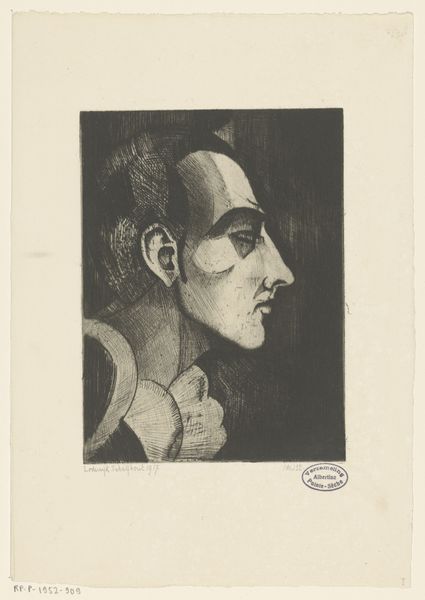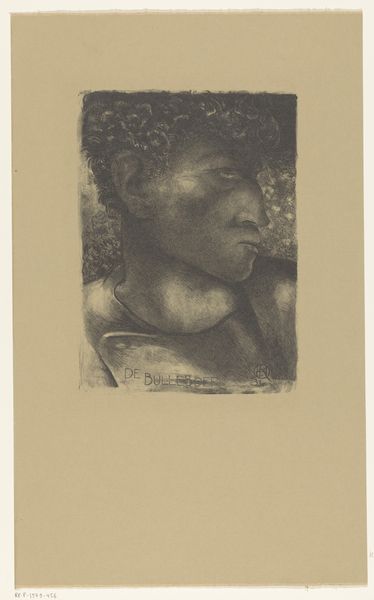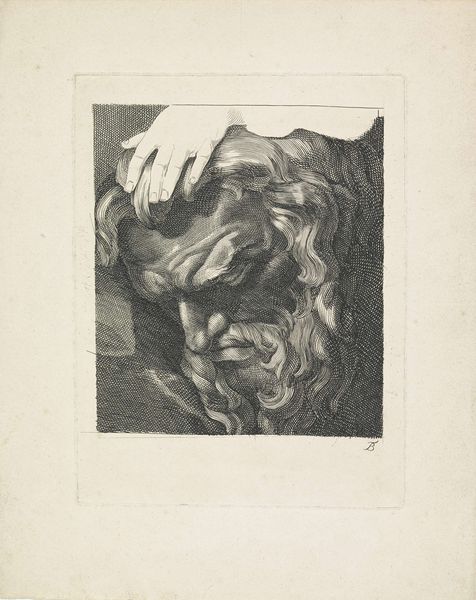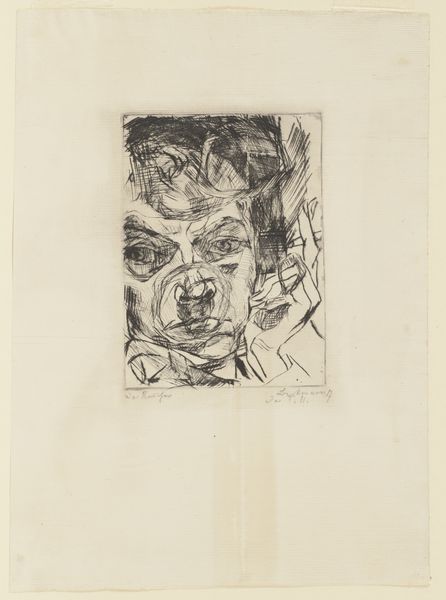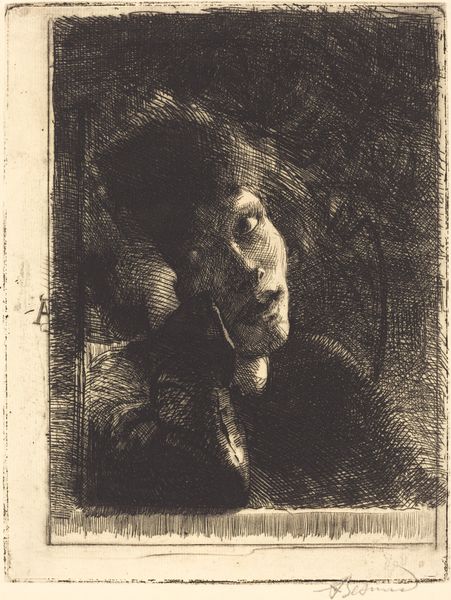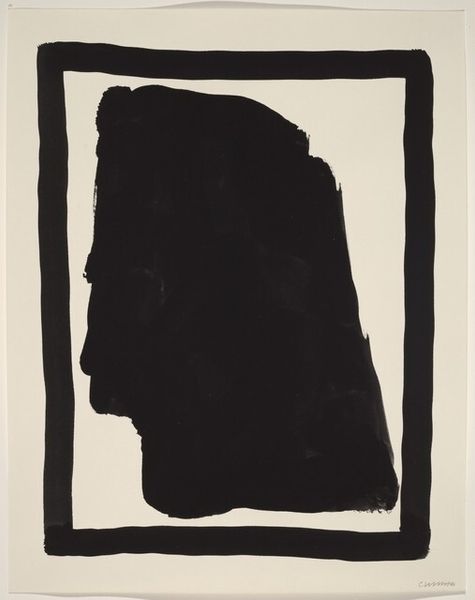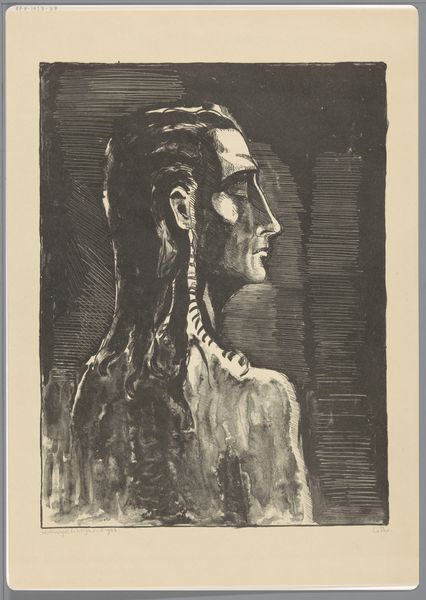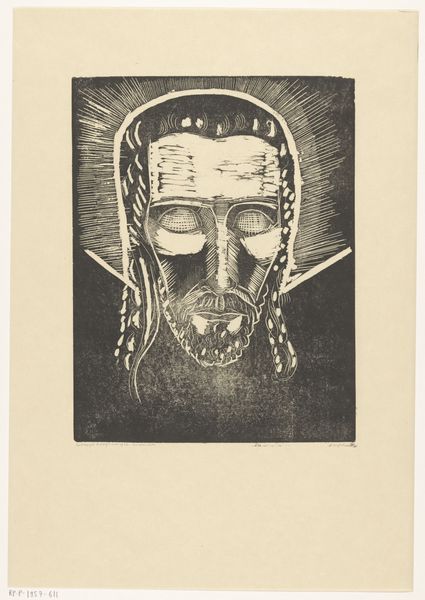
drawing, charcoal
#
portrait
#
drawing
#
charcoal drawing
#
figuration
#
pencil drawing
#
expressionism
#
portrait drawing
#
charcoal
Dimensions: height 555 mm, width 381 mm
Copyright: Rijks Museum: Open Domain
Curator: It feels overwhelmingly somber, almost imposing in its directness. Editor: Indeed. What we see before us is Jan Fekkes' charcoal drawing, "Portret van Ludwig van Beethoven," created in 1918. Fekkes captures Beethoven, not in the traditional heroic pose, but in a moment of intense introspection, even suffering. This expressionist approach seems incredibly fitting. Curator: The rendering is so interesting. Look how Fekkes uses planes of light and shadow to construct the face, especially around the eyes and brow. It's a fascinating approach to modeling form. There’s a certain monumentality to the image. Editor: Precisely. Fekkes made this drawing during a turbulent time—post-World War One. In the wake of the war’s devastation, art often grappled with the internal states of disillusionment. Fekkes turns Beethoven, a symbol of cultural achievement, into a figure bearing the weight of the world. The drawing challenges the concept of a singular heroic genius, perhaps suggesting the unbearable stress geniuses suffer under, or how traditional values appeared at the time. Curator: And the use of charcoal contributes significantly. The velvety blacks create a sense of depth and add to the emotional intensity. The sharp contrasts amplify the severity of his expression. Look at how those heavy strokes also evoke his turbulent internal world, especially around the hair area! Editor: He transforms Beethoven into an icon of pained consciousness. The choice of subject, in this context, speaks volumes. In that regard, Beethoven, even posthumously, represents art’s role in reflecting human tragedy and resilience. Curator: I am so drawn in by this very tactile presentation. Those dynamic, heavy marks… so bold and unflinching! Fekkes is definitely interested in form and tone. Editor: Thinking about this, in some ways, the genius of the artist is found less in idealisation, than in empathy and raw feeling. Curator: It certainly leaves you with something to think about. Editor: I agree, a rather sobering reminder about both inner torment and enduring achievement.
Comments
No comments
Be the first to comment and join the conversation on the ultimate creative platform.
